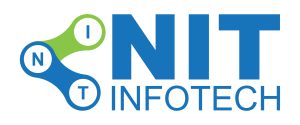In today’s interconnected digital world, ensuring the security of IT services is paramount for organizations of all sizes. IT services security encompasses a broad range of practices, technologies, and strategies aimed at safeguarding networks, systems, and data from potential threats and vulnerabilities. This comprehensive guide delves into the fundamental aspects of IT services security, the challenges organizations face, and the best practices to mitigate risks effectively.
Understanding IT Services Security
IT services security refers to the protection of information technology systems, networks, and data from unauthorized access, misuse, modification, or destruction. It involves implementing robust measures to ensure the confidentiality, integrity, and availability of digital assets. Effective IT services security is crucial in safeguarding sensitive information, maintaining business continuity, and protecting against financial losses and reputational damage.
Key Components of IT Services Security
Access Control: Managing access to IT resources is foundational to security. This involves authentication mechanisms (e.g., passwords, multi-factor authentication) to verify user identities and authorization processes to determine appropriate access levels based on roles and responsibilities.
Network Security: Securing the network infrastructure against unauthorized access and cyber threats is essential. Technologies such as firewalls, intrusion detection systems (IDS), intrusion prevention systems (IPS), and virtual private networks (VPNs) are used to monitor and protect network traffic.
Endpoint Security: Protecting individual devices (e.g., computers, mobile devices) that connect to the network is critical. Endpoint security solutions include antivirus software, endpoint detection and response (EDR) tools, and mobile device management (MDM) systems to detect and mitigate threats at the device level.
Data Protection: Ensuring the confidentiality, integrity, and availability of data is a core objective of IT services security. Encryption techniques are used to protect data both at rest (stored data) and in transit (data being transmitted over networks). Data loss prevention (DLP) solutions help prevent unauthorized access and leakage of sensitive information.
Security Monitoring and Incident Response: Continuous monitoring of IT systems for potential security incidents is vital. Security teams use tools and technologies to detect anomalies, investigate security breaches, and respond promptly to mitigate impacts. Incident response plans outline procedures to contain, eradicate, and recover from security incidents effectively.
Security Policies and Procedures: Establishing and enforcing security policies and procedures ensure consistency in security practices across an organization. Policies cover areas such as acceptable use of IT resources, password management, data handling guidelines, and employee training on security best practices.
Compliance and Governance: Adhering to regulatory requirements and industry standards is critical for IT services security. Organizations must ensure their security measures align with laws (e.g., GDPR, HIPAA), regulations, and industry-specific guidelines. Compliance audits and assessments validate adherence to security standards.
User Education and Awareness: Promoting a culture of security awareness among employees is essential in mitigating human-related risks. Training programs educate users about potential threats (e.g., phishing attacks), security best practices (e.g., strong passwords, safe browsing habits), and their role in maintaining IT security.
Challenges in IT Services Security
Despite advancements in technology, IT services security faces several challenges:
- Evolution of Threat Landscape: Cyber threats continually evolve, becoming more sophisticated and diverse, challenging organizations to keep pace with emerging threats.
- Complexity of IT Environments: Modern IT environments are complex, encompassing cloud services, mobile devices, IoT (Internet of Things) devices, and interconnected networks, increasing the attack surface and complexity of securing assets.
- Skills Gap: There is a shortage of skilled cybersecurity professionals capable of implementing and managing effective IT services security measures.
- Compliance Requirements: Meeting regulatory compliance can be complex and resource intensive, requiring organizations to navigate varying legal and industry-specific requirements.
Best Practices for IT Services Security
Implementing effective IT services security requires a proactive approach and adherence to best practices:
- Risk Assessment: Regularly conduct comprehensive risk assessments to identify potential vulnerabilities and prioritize security measures accordingly.
- Defense in Depth: Implement multiple layers of security controls (e.g., network segmentation, access controls, encryption) to create a robust defense against diverse threats.
- Patch Management: Keep systems and software up to date with security patches and updates to address known vulnerabilities promptly.
- Incident Response Planning: Develop and routinely test incident response plans to ensure swift and coordinated responses to security incidents.
- Employee Training: Educate employees on security awareness and best practices to reduce the likelihood of human error leading to security breaches.
- Monitoring and Logging: Implement continuous monitoring of IT systems and maintain comprehensive logs for detection, investigation, and forensic analysis of security incidents.
- Encryption: Utilize encryption technologies to protect sensitive data both at rest and in transit, ensuring confidentiality even if data is intercepted.
Conclusion
IT services security is a critical aspect of modern business operations, ensuring the protection of networks, systems, and data against evolving cyber threats. By implementing robust security measures, staying informed about emerging threats, and fostering a security-aware culture, organizations can mitigate risks effectively and safeguard their digital assets. Continuous improvement and adaptation to new security challenges are essential to maintaining a strong defense against cyber threats in an increasingly interconnected world.

